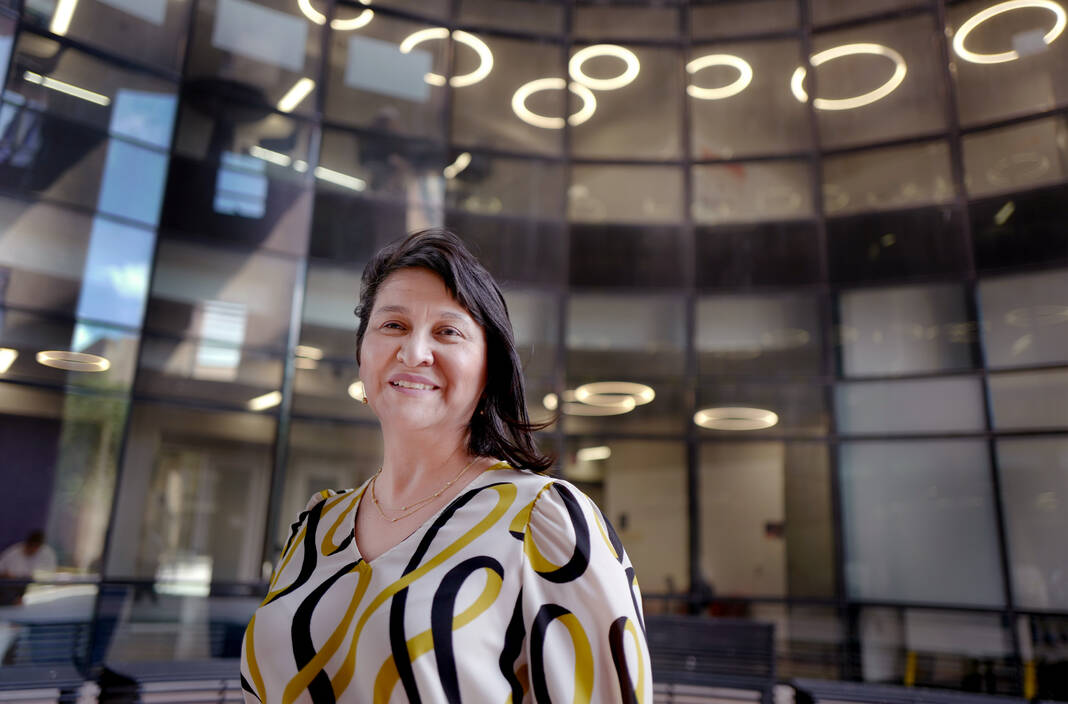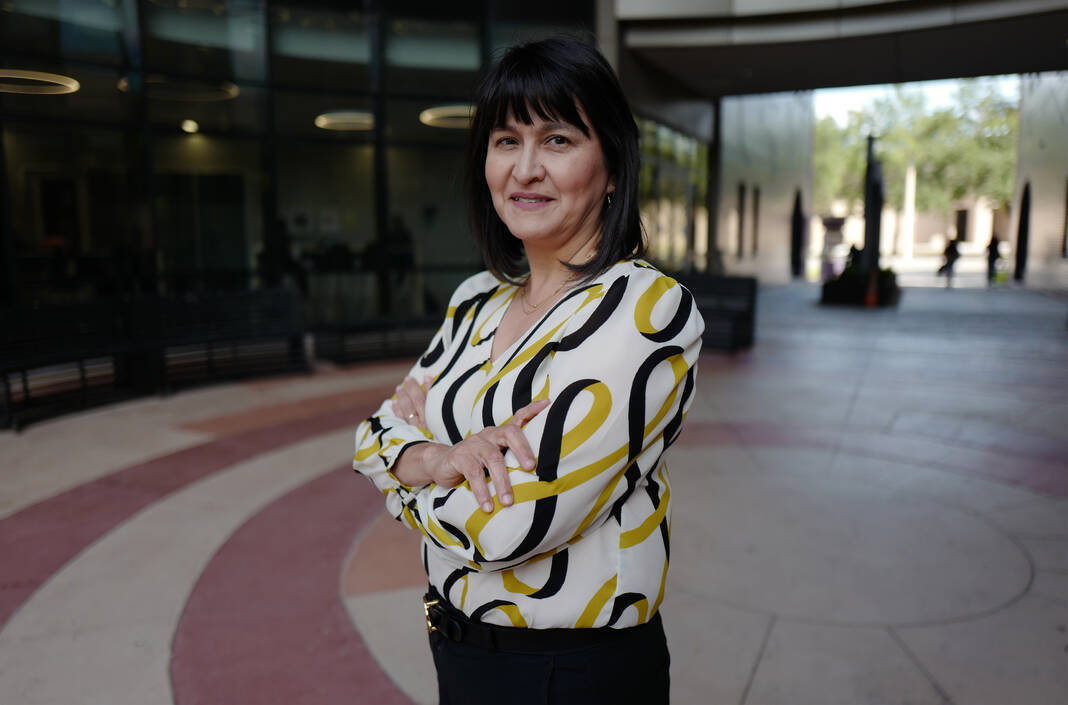|
Only have a minute? Listen instead
Getting your Trinity Audio player ready...
|
EDINBURG — Cristina Villalobos’ life is a mathematical statement: to get an answer you have to follow necessary steps, but her equation is far from over and she does it all while guiding Hispanic students in their own equations of life.
Villalobos is a Myles and Sylvia Aaronson endowed professor in the School of Mathematical and Statistical Sciences at the University of Texas Rio Grande Valley and the founding director of the Center of Excellence in STEM.
The renowned mathematics professor has made it her life’s ambition to push students, especially Hispanics and other minorities, into pursuing bachelors, masters and PhDs in STEM fields.
“When I go to meetings across the nation, one of the number one things is increasing the number of minorities getting PhDs in STEM fields. … the percentages of minorities getting PhDs really decreases drastically,” Villalobos said. “So right now with PhDs, I believe in terms of minorities … It’s about 7% getting PhDs in STEM. So that’s why it’s exciting to prepare these students, provide them with opportunities … and tell them you can make an impact.”
The Donna native and first generation Mexican-American college graduate started from humble beginnings. With both of her parents being from Nuevo Leon, Mexico and not having education past high school levels, Villalobos said education was a top priority in her household.
Always having a strong interest in mathematics, Villalobos took part in the TexPREP program at legacy institution Pan American University, which sparked her decision to major in mathematics at The University of Texas at Austin. She would then get her master’s and doctoral degrees in computational and applied mathematics from Rice University.
She credits her academic success to having a strong foundation of teachers, professors and mentors along the way, which she carried into her own career as she started teaching at then-University of Texas-Pan American in the early 2000’s.
“So when I came here to UT Pan American hoping that, you know, like any faculty you want to make an impact on students’ lives and especially since we are an Hispanic Serving Institution,” Villalobos said. “We’ve got so much potential here of students who we can develop into leaders.”
Villalobos has helped send off students to get PhDs in math, with many other students already working at Chevron, NASA or being tenure track faculty at other universities.
“So, that’s really exciting to see them making an impact and increasing the number of Latinos getting STEM degrees. … you want to prepare students and you want to provide them with opportunities,” she said. “Because many times students may not know that there are these opportunities, but if you provide them with opportunities, open up the doors, they’re wanting to do it, and they’re willing to meet those expectations and go above that.”
That ambition to ignite and guide the next generation of mathematicians helped establish the Center of Excellence in STEM education.
It is one of three funded by the U.S department of Defense and the only one at a Hispanic Serving Institution, or HSI.
The center focuses on strengthening academic STEM programs, facilitating professional development in faculty and students, and increasing the number of STEM graduates particularly from underrepresented groups. By giving workshops on how to prepare research posters, applying to summer research programs and more, Villalobos wanted to give students that information and support that she noticed the university lacked.

The center also focuses on K-12 outreach with over 16,000 students each year being exposed to STEM education through on-campus visits. Villalobos said through hands-on experience students are taught STEM skills but most importantly are opened to the world of exploring and being curious.
“Maybe that’s an avenue that they want to explore more as they’re progressing through middle school and high school and so we want to be that,” she said. “And hopefully, you know, we’ll have the next up and coming scientists getting the bachelor’s degree and, you know, on to a PhD and maybe even a Nobel Prize, so that’s really exciting.”
Villalobos’ dedication to the next generation of STEM students has immeasurable influence on Hispanics and other minorities in the STEM field and that influence has not gone unnoticed.
In 2013, she received the Distinguished Undergraduate Institution Mentor Award from the Society for the Advancement of Chicanos & Hispanics and Native Americans in Science. In 2016, she received the Outstanding Latina Faculty Service and Teaching Award from the American Association of Hispanics in Higher Education Service.
In 2019, Villalobos received the Richard A. Tapia Achievement Award for Scientific Scholarship, Civic Science and Diversifying Computing. Villalobos said getting that award was exciting since Tapia was her mentor at Rice University.
The award that tops it off is the Presidential Award for Excellence in Science, Mathematics and Engineering Mentoring, which she received in 2020.
“I feel like there’s still a lot more to do,” Villalobos said. “I don’t see my job as resting anytime soon. I just want to push on and get more students to finish their bachelor’s degree and become leaders.”
And given that UTRGV is an HSI, there’s enormous potential to make a national impact.
“And I tell students, ‘You gotta be at the table.’ You know, making decisions with others who may not know the Latino population,” she said. “But you do. Because you grew up in this area. You know the needs of our community, so that’s very important.”
This story is the first in a series observing National Hispanic Heritage Month.
MORE STORIES IN THE SERIES
Former UTRGV student president exemplifies giving power to the people
Point Isabel ISD art teacher and muralist finds inspiration in heritage




